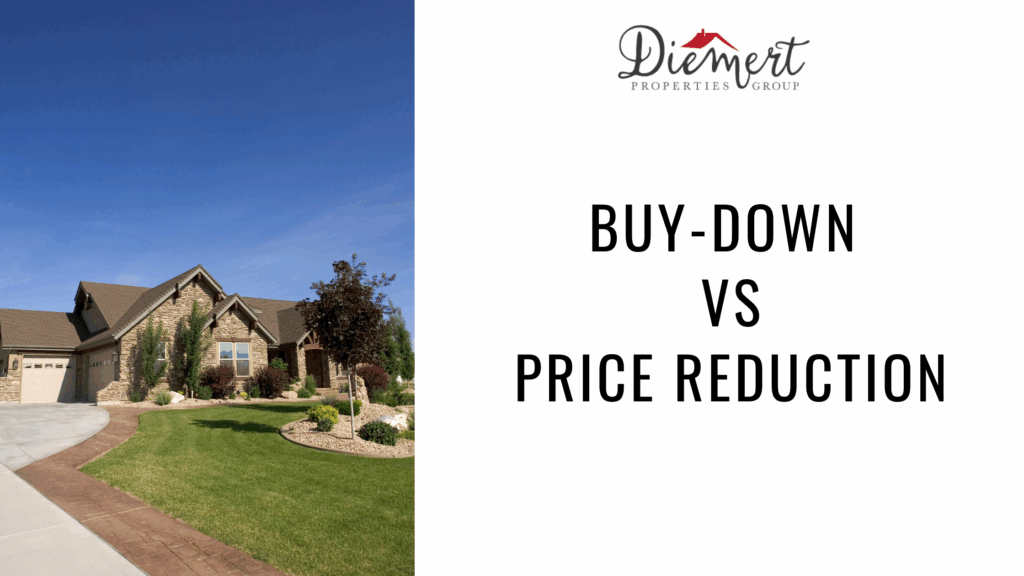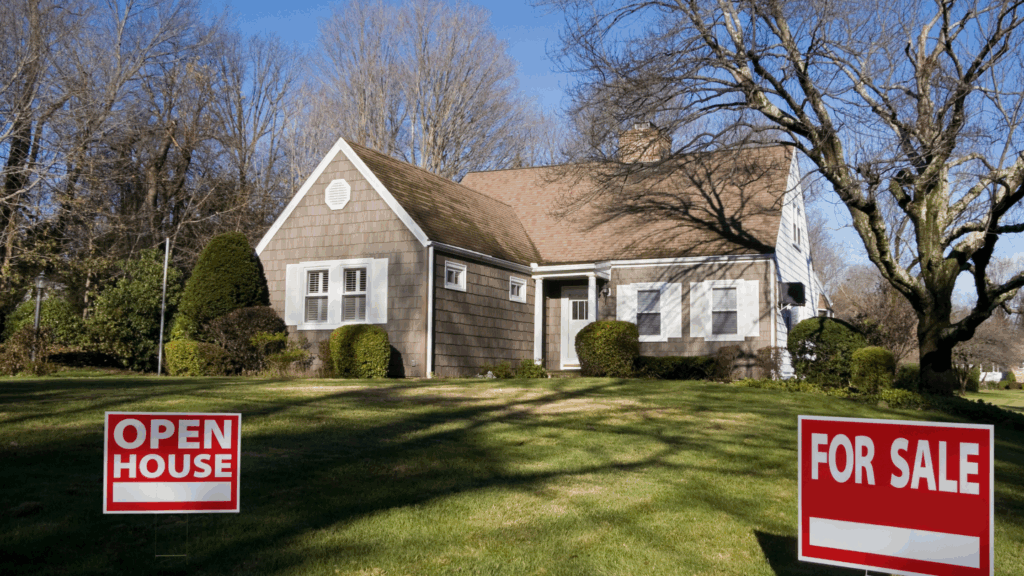Introduction to the Snohomish County Real Estate Market

Why Snohomish County is a Prime Destination
Snohomish County, WA, offers that perfect blend of Pacific Northwest beauty, strong community vibes, and access to booming economic opportunities. Nestled just north of Seattle, it provides a quieter, more suburban lifestyle without sacrificing convenience. For seasoned buyers, first-time buyers, and even retirees, it’s a place that feels like home almost instantly.
What makes Snohomish especially appealing is its diversity in housing and neighborhoods. From the waterfronts of Everett and Mukilteo to the wooded retreats in Snohomish and Monroe, the county has something for everyone. It’s also growing, which means more homes, more opportunities, and yes—more buyer incentives like buy downs and price reductions.
Current Market Conditions and Buyer Trends
The local market has been shifting over the past year. With interest rates fluctuating and inventory slowly rising, sellers are getting more creative to attract buyers. This is where you’ll see incentives like price reductions and mortgage rate buy-downs come into play. For buyers in Snohomish County, that’s a good thing—it means you have options, and can negotiate smarter deals than you might have a year or two ago.
But which is the better choice for you? That’s what we’re about to explore in depth.
Understanding the Basics

What is a Price Reduction?
A price reduction is exactly what it sounds like: the seller lowers the listed price of the home. This tactic is typically used when a home has been sitting on the market longer than expected or when competition is fierce. For buyers, a price reduction can feel like a win—it brings the cost of the home down and could make monthly payments lower depending on your loan terms.
However, while it reduces the total amount you’re financing, it may not provide the same monthly payment relief that a buy-down could offer. Plus, sellers may be more willing to entertain other incentives instead of cutting their asking price outright, especially in desirable neighborhoods.
What is a Buy-Down?
A mortgage rate buy-down is a financial strategy where the seller (or sometimes the buyer) pays upfront fees to lower the interest rate on the buyer’s mortgage. This reduces the monthly mortgage payment, making homeownership more affordable in the short or long term, depending on the structure.
There are two main types of buy-downs:
Temporary Buy-Downs
These reduce the interest rate for the first few years of the loan—common examples are 2-1 or 3-2-1 buy downs. In a 2-1 buy-down, your interest rate is reduced by 2% in the first year, 1% in the second, and then reverts to the original rate in the third year and beyond.
Permanent Buy-Downs
Here, the interest rate is lowered for the life of the loan. This usually involves paying more upfront (in the form of “points”), but the long-term savings can be substantial.
Both strategies serve the same purpose: making your monthly mortgage payments more manageable. But they do so differently, and choosing between them or a price reduction requires a closer look.
The Mechanics Behind the Methods
How Price Reductions Work in Practice
Let’s say you’re eyeing a charming Craftsman Home in Snohomish listed at $650,000. It’s been on the market for 45 days, and the seller is motivated. They drop the price to $630,000 to stir up interest.
If you’re financing with a 30-year fixed mortgage at 6.5%, that $20,000 discount could reduce your monthly payment by about $126. That’s helpful, no doubt. But most of your monthly cost still comes from your mortgage interest rate—not the home’s sticker price. So while you’re saving upfront, you’re not gaining much monthly breathing room.
How Mortgage Buy Downs Affect Monthly Payments
Now imagine instead that the seller keeps the price at $650,000 but offers to pay $10,000 toward a 2-1 buy down. Your interest rate drops from 6.5% to 4.5% in year one and 5.5% in year two.
That could lower your monthly payment by over $700 in the first year alone—far more impactful than the $126/month savings from a price cut. Sure, your rate rises after the first two years, but by then, you may have increased income, built equity, or chosen to refinance.
This is where it gets interesting—and personal. Do you want lower payments now or long-term savings later?
Cost Comparison and Buyer Benefits

Short-Term vs. Long-Term Savings
Buy downs shine for buyers who need short-term affordability—maybe you’re transitioning jobs, expecting financial growth, or just want some wiggle room for moving and furnishing costs. A price reduction, meanwhile, is best for long-term planners. It lowers your overall loan balance, which reduces both interest and property taxes over time.
So if your goal is to save money in the first few years, a buy-down is likely your best friend. But if you plan to stay put for 15 to 30 years and want the best overall financial deal, a price cut might win out.
Real-Life Math: Comparing Two Common Scenarios
Here’s a quick breakdown for a $650,000 home:
| Strategy | Upfront Cost | Monthly Payment (Year 1) | Monthly Payment (After Buy Down) | Total Interest (30 Years) |
|---|---|---|---|---|
| Price Reduction ($20k) | $0 | ~$3,487 | ~$3,487 | ~$606,000 |
| 2-1 Buy Down ($10k) | $10,000 (Seller-Paid) | ~$2,752 | ~$3,131 (Year 2), ~$3,487 (Year 3+) | ~$619,000 |
You can see the dramatic first-year savings of the buy down, but also that long-term, a price reduction could save you more overall.
Seller Strategy – Why They Offer Buy Downs or Reductions

Motivations Behind Each Strategy
From a seller’s perspective, offering a buy down can be more appealing than slashing the price. Why? It feels more generous to buyers, and it keeps the home’s value “on paper” higher—which can help with comps in the neighborhood.
Price reductions, however, send a clear message: “We’re serious.” They may attract more foot traffic but can also signal that the home might be overpriced or there’s something wrong with it (even if that’s not the case).
How It Impacts the Home’s Perceived Value
In markets like Snohomish County, where demand fluctuates neighborhood by neighborhood, perception matters. A buy down keeps the home’s list price steady, which helps protect the seller’s equity and keeps the home looking more competitive online. Buyers, meanwhile, may feel they’re getting a better deal without the stigma of a “discounted” property.
What’s Better for Buyers in Snohomish County?

The Case for Buy Downs
For many Snohomish County buyers, a buy-down can feel like a breath of fresh air. This is especially true for first-time homebuyers who may be dealing with rising rents, student loans, or the cost of setting up a new home. With a buy-down, your monthly mortgage payment is significantly lower for the first year or two, which can provide crucial financial flexibility.
Let’s say you’re buying in Marysville or Lynnwood, where prices have climbed steadily. A buy down gives you the ability to comfortably settle into your new home without financial stress. You can use the savings to furnish your house, build an emergency fund, or even invest in home improvements. Plus, the temporary relief can help ease you into the full mortgage payment as your income (hopefully) increases over time.
In a fluctuating interest rate environment, many buyers also bet on being able to refinance in a few years. A buy down lets you weather the early high-rate period while still locking in your dream home today.
The Case for Price Reductions
That said, price reductions shouldn’t be dismissed. They’re especially appealing to buyers who plan to stay in the home long-term. If you’re looking in neighborhoods like Lake Stevens or Snohomish, where you plan to put down roots, a price cut could mean thousands in savings over the life of your loan.
With a lower purchase price, you reduce not just your mortgage but also your property taxes and possibly even your homeowner’s insurance premiums. That’s long-term budgeting power. A price reduction also doesn’t come with the expiration date that a temporary buy-down does. It’s a clean, simple way to get more home for your money—and to build equity faster.
Market Timing and Buyer Demographics
Timing also plays a key role. In a buyer’s market—where inventory is high and sellers are more motivated—price reductions might become more common. But in a market like Snohomish County, which often sees competitive listings, especially in places like Bothell or Mill Creek, buy downs might be the more strategic tool.
Your age, career path, and future plans should all influence your decision. Are you early in your career with room to grow? A buy down might be perfect. Are you nearing retirement or looking for your forever home? A price reduction could offer more stability.
Financing Considerations and Loan Types
Which Loans Work Best with Buy Downs?
Buy-downs are more compatible with some loan types than others. Conventional loans often provide the most flexibility, particularly when dealing with seller-paid concessions. Lenders working with conventional products can typically structure a buy-down more easily, especially if the buyer has a strong credit profile.
That said, FHA loans can also support buy downs—but there are caps on how much the seller can contribute. Currently, FHA allows up to 6% of the purchase price in seller concessions, which can be used toward closing costs or a buy-down. VA loans offer similar flexibility, with even more generous terms in some cases.
However, if you’re using a USDA loan or a special state or local program, things might get trickier. It’s essential to check with your lender to see what’s permitted based on your financing type.
FHA, VA, and Conventional Options
Here’s a quick comparison of how different loan types handle buy downs:
| Loan Type | Buy Down Friendly? | Seller Concession Limit | Common in Snohomish County? |
|---|---|---|---|
| Conventional | Yes | 3%–9% (depending on down payment) | Very common |
| FHA | Yes | Up to 6% | Popular with first-time buyers |
| VA | Yes | Up to 4% (plus additional allowances) | Used by veterans and military families |
| USDA | Sometimes | Varies by lender | Less common in metro areas |
For buyers in Snohomish County, where home values are often above national averages, many lean on conventional financing. Still, if you’re a veteran or qualify for FHA programs, buy downs remain an excellent negotiation point.
Talking to Your Lender and Realtor
Questions to Ask Before Making an Offer
When you’re seriously considering a home, talk to your lender and real estate agent about all your options. Ask things like:
- Can I structure this deal with a 2-1 buy down?
- What would my monthly payment look like with a price cut versus a buy down?
- Will the seller likely agree to a buy down based on current local market trends?
- Can my loan type support this structure?
These professionals are your secret weapon. They’ve seen countless deals and know which approach works best given the home, the seller, and your financial goals.
How Local Experts Can Help You Decide
A knowledgeable Snohomish County realtor will know the lay of the land. They’ll have insights on what’s working in neighborhoods like Granite Falls, Arlington, or Edmonds. Maybe sellers in Everett are offering buy downs more frequently, while sellers in Monroe are leaning toward price reductions. Your agent can use this data to negotiate better terms on your behalf.
And your lender? They can run exact numbers so you can compare apples to apples. Understanding the exact financial breakdown helps you feel confident when making an offer—and that peace of mind is priceless.
Snohomish County Neighborhood Spotlights
Popular Areas Where Buy Downs Are Common
In competitive, newer developments like those in Bothell or the expanding communities in Lake Stevens, buy downs are frequently offered as a builder incentive. Builders love using them because it allows them to keep the sale price high (which helps future appraisals) while still offering meaningful buyer benefits.
If you’re eyeing new construction, definitely ask about buy downs. Many developers have standing relationships with preferred lenders and may even cover the full cost of a 2-1 or 3-2-1 buy down as part of your package deal.
High-Demand Zip Codes and Trends
Here’s a breakdown of some key Snohomish County markets:
| Area | Zip Code | Trend | Typical Incentives |
|---|---|---|---|
| Everett | 98201, 98203 | Hot resale market | Price Reductions |
| Lake Stevens | 98258 | New construction boom | Buy Downs |
| Bothell (Snohomish Co. side) | 98012 | Competitive listings | Buy Downs |
| Lynnwood | 98087 | Balanced market | Mix of both |
| Monroe | 98272 | Suburban growth | Price Reductions |
Knowing these patterns can help you tailor your approach when shopping around.
The Emotional Side of Home Buying
Buyer Psychology and Confidence
Let’s be real—buying a home is an emotional experience. It’s a mix of hope, excitement, anxiety, and sometimes even panic. You’re not just making a financial decision; you’re choosing where you’ll build your life.
That’s why buy downs can be such a powerful tool. They reduce the financial shock that often comes with your first few mortgage payments. That breathing room can increase your confidence and make the whole process feel less overwhelming.
On the flip side, a price reduction can make buyers feel like they’ve “won” something in the negotiation. That psychological boost can be just as valuable, especially if you’re looking in areas where homes tend to move slowly and sellers are willing to deal.
How Buy Downs Can Ease Decision-Making
In today’s high-interest market, many buyers feel paralyzed by the potential for rising rates. A buy-down can be that bridge between uncertainty and action. It says, “Hey, you don’t have to pay 7% interest right away. You’ve got time to settle, adjust your finances, and maybe refinance later.”
That kind of flexibility isn’t just practical—it’s emotional gold.
Making the Smart Choice for You
Decision-Making Framework
If you’re feeling overwhelmed, that’s totally normal. Here’s a simple framework to help guide your decision:
- Assess Your Timeline
- Short-term ownership = Buy-down might be best
- Long-term ownership = Price reduction saves more
- Understand Your Finances
- Need cash flow now? Opt for a buy-down
- Focused on total savings? Lean toward price cuts
- Consult Your Lender and Agent
- Run side-by-side comparisons
- Explore what the seller is most likely to agree to
- Factor in Emotions and Comfort
- Don’t underestimate peace of mind
- Choose the option that fits your lifestyle
- Plan for the Future
- Will you refinance? Sell? Stay long-term?
This clarity can make the difference between a stressful purchase and a smart, confident one.
Customizing the Strategy to Your Needs
Remember—this is your journey. Whether you’re settling down in an Everett neighborhood, commuting from Mill Creek, or enjoying the rural peace of Arlington, your strategy should reflect your goals.
Talk openly with your realtor, be honest with your lender, and don’t hesitate to negotiate. Sellers expect it, especially in today’s market.
Conclusion: Your Path to Homeownership in Snohomish County
Buying a home in Snohomish County is one of the most exciting moves you can make. The views are stunning, the neighborhoods are vibrant, and the market is full of opportunity. Whether you go with a price reduction or a buy-down, the key is to make an informed, confident decision that aligns with your needs today—and your dreams for tomorrow.
Don’t be afraid to ask questions, get advice, and run the numbers. In a market like ours, those who educate themselves always come out ahead.
Welcome home, future Snohomish homeowner. You’ve got this.
FAQs
Is a buy-down always better than a price reduction?
No. A buy-down is excellent for short-term savings, but a price reduction can offer greater long-term benefits, especially if you plan to stay in the home for a decade or more.
How can I negotiate a buy-down with a seller?
Have your realtor include it as part of the offer. It’s often presented as a seller credit and can be positioned as an alternative to lowering the home price.
Can I combine a price reduction and a buy-down?
Yes, though it depends on the seller’s flexibility. Usually, you’ll need to choose one.
What if I plan to refinance—should I still do a buy-down?
Yes, if your refinance plan aligns with the buy-down schedule. Just make sure the cost of the buy-down justifies the benefit you’ll receive before refinancing.
Do lenders in Snohomish County offer special buy-down programs?
Many do, especially preferred lenders working with builders. Talk to your agent or mortgage broker for current offers.

